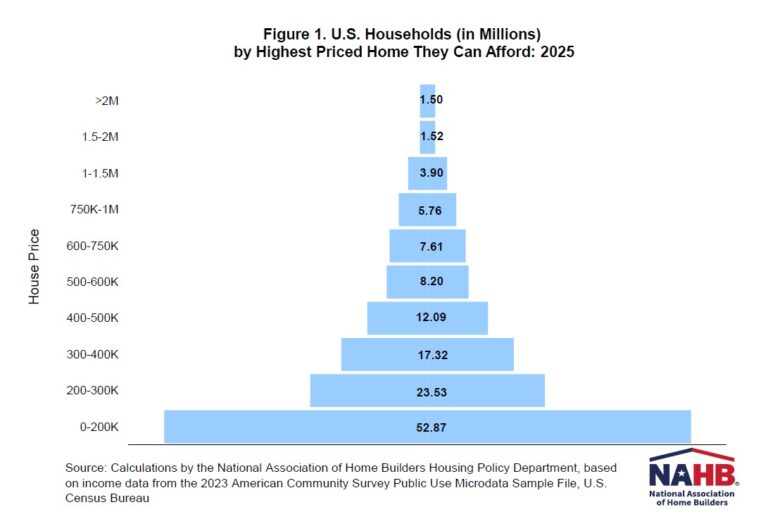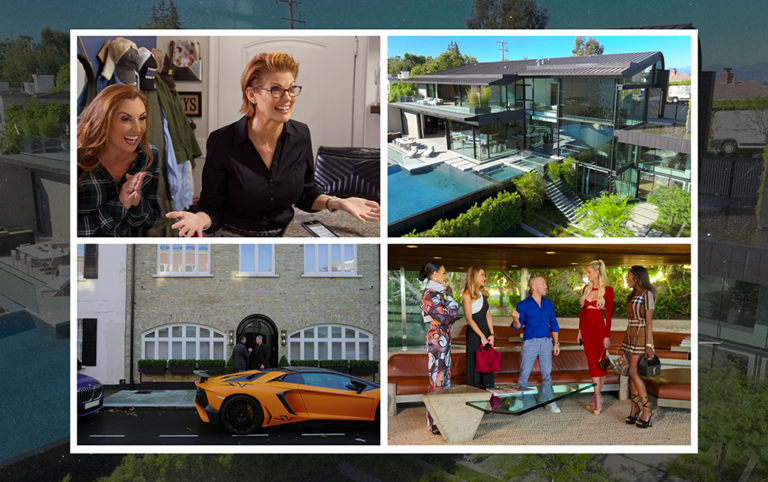The allure of the real estate reality show is two-fold: showcasing luxury real estate in the world’s most desirable locations for an aspirational viewing experience and encouraging audiences to shamelessly indulge in their inner voyeur. There’s no denying the pleasure of seeing the interiors of the homes of the rich and famous, or, in what may be a more compelling draw for many viewers, granting access to the private dramas and personal conflicts of those on the show. In recent years, realty as reality show fodder has boomed, especially on Netflix, where shows like Selling Sunset and Buying Beverly Hills pair luxury real estate offerings with captivating reality TV personalities. Netflix’s latest entry, Owning Manhattan, out June 28, is real estate reality at its finest—glittering escapism with just enough personal drama to temper the opulence.
Here is a guide to the best real estate reality shows to stream on Netflix.
Buying Beverly Hills
At the center of Buying Beverly Hills is Mauricio Umansky, a familiar face to many reality television fans. That’s because Umansky has been a fixture on Bravo’s The Real Housewives of Beverly Hills since 2010, which stars his now estranged wife Kyle Richards. Buying Beverly Hills switches the spotlight over to Umansky and his lucrative real estate firm The Agency, which employs some of Umansky and Richards’ daughters as well as other young realtors hoping to make it big. The show’s got it all: tours of glitzy multi-million dollar homes, realtors clashing over deals, and, of course, casual accusations of nepotism as everyone at the office discusses who could possibly be next in line to take over the family business.—Annabel Gutterman
Marriage or Mortgage
Reality shows about the wedding industrial complex have long been a staple of the genre, but with Marriage or Mortgage, the fantasy of wedding planning is tempered by a bracing perspective about the economic realities of our time. The premise of the show is seemingly simple: couples meet with hosts Nichole Holmes, a real estate agent, and Sarah Miller, a wedding planner, to debate whether they’d like to spend their hard-earned savings on a house or a wedding. But the show cogently taps into the emotions of economics—how we spend our money and why. While it’s easy to reason that a down payment on a house is a better investment than spending tens of thousands of dollars on a wedding, for many of the couples on the show, having a blowout party to celebrate their nuptials holds far more value than owning a home (six out of the 10 couples featured in the series opted for the wedding). Adding to the emotional weight of the show is the knowledge that much of the show was filmed pre-2020, so many of the couples who chose “marriage,” were forced to postpone or downsize their weddings. Ultimately, Marriage or Mortgage is a portrait what our finances can tell us about ourselves.—Cady Lang
Selling Sunset
With seven seasons under its crystal-encrusted Gucci belt, Selling Sunset is the grand dame of Netflix real estate soaps. Starring a highly telegenic subset of female agents at twin moguls Jason and Brett Oppenheim’s exclusive Los Angeles brokerage, the Oppenheim Group, the series quickly found a following among viewers who like their drama with a side of mansion porn, rather than the other way around. In its early heyday, the central conflict pitted reigning mean girl Christine Quinn—a clotheshorse of truly demented personal style—against wide-eyed newcomer Chrishell Stause, an All My Children and Days of Our Lives alum with Disney princess sparkle and a martyr complex. The show stagnated as Quinn alienated even new co-workers who seemed to have been cast solely to give her allies, and kept declining after her departure at the end of Season 5. Yet, whether you credit it to terminal bachelor Jason’s chaotic love life or the inexplicably moving bond between his loyal ex turned deputy Mary Fitzgerald and her much-younger, French husband Romain Bonnet or simply the cast’s preternatural ability to escalate a perceived slight into a full-on feud, Selling Sunset remains perplexingly addictive. Which is, of course, how you can tell it’s a reality-TV classic.—Judy Berman
Selling Tampa
Though the properties featured on Selling Tampa are ostentatious enough to steal the show, they’re easily forgotten in the midst of the high-octane drama that fuels Allure Realty, a Black woman-owned and operated firm that aims to take over the luxury real estate market in Tampa. Led by Sharelle Rosado, the “tough love” girl boss head broker of the firm, the agents at Allure, ranging from a pair of fun-loving best friends to a seasoned agent whose ambitions point to her striking out on her own in the future, never have a dull moment between their professional rivalries and the complex personal lives. Though the ladies of Selling Tampa were undeniably compelling as both real estate agents and reality TV characters, the show was prematurely canceled after its first season, a true loss for real estate reality fans everywhere.—CL
Selling the OC
What better way to capitalize off the success of Selling Sunset than by launching a spinoff series—and opening another Oppenheim Group brokerage—just 40 miles south? Selling the OC is the Trumpier younger sibling of the Netflix hit that could double as an anthropological study of Newport Beach and its billionaire residents. In this iteration of the show, the veneers are whiter, the tans are faker, and the McMansions are even more supersized; plus, Jason says bye-bye to Brett and serves as the sole Oppenheim brother on set. The agents (three of whom are named Alex) at this coed firm are all animatronic Instagram filters come to life, which only makes the inter-office dating and drama all the more fascinating.—Meg Zukin
The Parisian Agency
Many of Netflix’s realty reality shows bring the drama, but their real estate offerings—often plain white boxes and identical modern farmhouses—leave much to be desired. But The Parisian Agency: Exclusive Properties is for the architecture and interior design nerds.
The show focuses on the Kretz family as they try to find the right million-dollar properties for France’s rich and (sometimes) famous. You’ll tour a 19th century suburban mansion, a villa in St. Tropez, and countless apartments with classical details like Haussmann facades, ornate fireplaces, and French balconies. If you want even more charm, stay for the antics of the family’s grandmother, Majo.—Samantha Cooney
Owning Manhattan
In the vein of Selling Sunset and Selling the OC, Owning Manhattan, the latest addition to the large swath of real estate reality shows, is centered around a real estate agency—SERHANT in New York City. The agency is helmed by Ryan Serhant, who boasts about being the No. 6 spot on The Real Deal’s list of Top Residential Brokerages for 2022. He’s no stranger to the camera, gaining a reputation during his time on Million Dollar Listing New York. Owning Manhattan takes viewers through jaw-dropping apartments with high price tags around New York City and provides plenty of petty drama. In particular, Serhant, who is dedicated to integrating social media into the business practice of publicizing listings and turning his agents into internet personalities, brings an alluring charisma as he shares what it’s like to sell multi-million dollar dwellings while managing multiple egos.—Moises Mendez II
Buying London
Buying London is centered around the company DDRE Global, owner Daniel Daggers, and its agents. The company prides itself on its connection to celebrities and according to House Beautiful, Daggers has worked with members of the Royal family, in addition to “high-profile people in sports, entertainment, and finance.” While the show may not bring the highest level of drama, in comparison to other Netflix real estate reality shows, it does provide a window into the housing market of a notoriously expensive city.—MM


